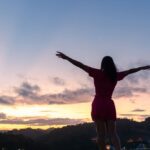Ever wonder why so many people turn to alcohol and other addictive substances—not for a high, but for relief? It’s not always about chasing pleasure. For many, it’s about escaping pain. The kind that lingers beneath the surface—grief that won’t heal, anxiety that won’t shut off, memories that refuse to stay quiet.
In the beginning, drinking or using drugs might feel like hitting a pause button on all that noise. Just enough to feel okay. Just enough to breathe. But over time, that temporary escape can turn into a trap.
At Eagle View Behavioral Health, we’ve seen this story unfold again and again. And here’s what we know: addiction often isn’t about the substance itself. It’s about what the substance is helping you avoid. That’s why understanding emotional avoidance—the urge to run from pain instead of face it—is such a crucial piece of the recovery puzzle.
What Is Emotional Avoidance?
Emotional avoidance is the habit of dodging feelings that feel too painful, messy, or overwhelming to deal with directly. It’s your brain’s way of saying, “This hurts too much. Let’s not go there.”
For many people, emotional avoidance is the hidden engine behind addiction. Substances like alcohol, cannabis, or prescription drugs can offer a quick escape from feelings like fear, grief, guilt, or shame. They provide a kind of temporary relief—like putting a bandage over a wound that really needs stitches.
This pattern is especially common in people who are also living with anxiety, depression, PTSD, or other mental health conditions. When your mind is already flooded with intrusive thoughts or low moods, facing tough emotions can feel unbearable. So, you reach for something that promises even a moment of calm or distraction. Over time, that habit of reaching outwards to avoid looking inwards can spiral into dependency.
When emotions feel overwhelming, emotional avoidance becomes a lifeline—a strategy we learn in childhood before we have the tools to cope. But while avoidance may have helped you make it through hard times in the past, it can quietly build walls between you and the life you want to live now.
Why Avoidance Feels Safer—But Isn’t
The human brain is wired to avoid pain. Emotional pain, especially. When substances offer quick relief, it can feel like a solution. But it’s a trap.
What starts as relief turns into dependency. The brain begins to rely on substances not just to feel good—but to feel nothing. Over time, this rewires emotional responses. People struggling with addiction often report feeling emotionally numb or disconnected. That’s not a coincidence. It’s the cost of trying not to feel.
Emotional avoidance and addiction aren’t just psychologically linked—they’re biologically intertwined. When we consistently push away difficult emotions and reach for substances to cope, we start changing how our brain works. Over time, these changes reinforce the cycle of addiction, making it harder to break free without support.
The Dopamine Hit
Substances like alcohol, opioids, and stimulants trigger a surge of dopamine—the brain’s “feel good” chemical. Dopamine plays a major role in motivation, reward, and pleasure. So, when you use a substance and feel temporary relief from anxiety, sadness, or shame, your brain registers that as a win. It sends a powerful message: “This works. Do it again.”
But there’s a catch. Over time, your brain starts to produce less dopamine naturally and becomes less sensitive to it. That means you need more of the substance just to feel “normal.”
The Avoidance Loop
Each time you reach for drugs or alcohol to avoid an emotion, your brain strengthens that neural pathway. Like a well-worn trail in the woods, it becomes the easiest, most automatic route your brain takes when stress or discomfort hits.
This is how people end up drinking or using without really thinking about it. You may not even realize what emotion you’re avoiding—just that you feel uneasy, restless, or emotionally drained. The substance becomes the default escape route, even when it no longer brings relief.
The Emotional Backlog
Emotions don’t just disappear because we ignore them. When you avoid sadness, grief, anger, or fear, those feelings don’t fade. They just go underground. And they don’t stay quiet forever.
This “emotional backlog” can show up as:
- Sudden, overwhelming mood swings
- Physical symptoms like tension, insomnia, or fatigue
- Panic attacks or anxiety spikes that have no clear trigger
- An urge to numb out more frequently or intensely
Facing What Hurts Is the Path to Healing
It’s important to know that facing your feelings doesn’t mean drowning in them. At Eagle View, we help people like you gradually reconnect with their emotions in ways that feel safe, structured, and supported.
- Trauma-Informed Therapy
Many addictions are rooted in unresolved trauma. Therapies like EMDR (Eye Movement Desensitization and Reprocessing), CPT (Cognitive Processing Therapy), or Somatic Experiencing help people process painful memories without being overwhelmed.
- Mindfulness Practices
Mindfulness helps retrain the brain to observe emotions instead of avoiding them. Even five minutes of deep breathing or guided meditation can teach your nervous system that discomfort isn’t dangerous—it’s just temporary.
- Integrated Dual Diagnosis Treatment
When substance use and mental health conditions exist together, both must be treated. Depression, anxiety, or PTSD can’t be separated from addiction because they often fuel it. Our dual diagnosis programs ensure that no part of your experience is ignored.
- Peer Support and Connection
Avoidance thrives in isolation. Recovery thrives in connection. Support groups and peer-led therapy sessions provide spaces to share, relate, and heal—together.
- Skill-Building for Emotional Regulation
It’s not enough to say “feel your feelings.” Most of us were never taught how. Skills like emotional naming, self-soothing, boundary setting, and cognitive reframing help build resilience. You learn how to ride the wave without numbing it.
You’re Not Broken. You’re Surviving.
Addiction is not a moral failing. It’s a sign of emotional pain that’s gone unspoken or unsupported for too long. The good news? Healing is possible. And it doesn’t start by being “stronger”—it starts by being honest.
If you’re ready to stop running and start healing, we’re here to help. Our programs in Bettendorf, Iowa are designed to meet you where you are and guide you forward with compassion, not judgment. Reach out today for a free, confidential assessment.






